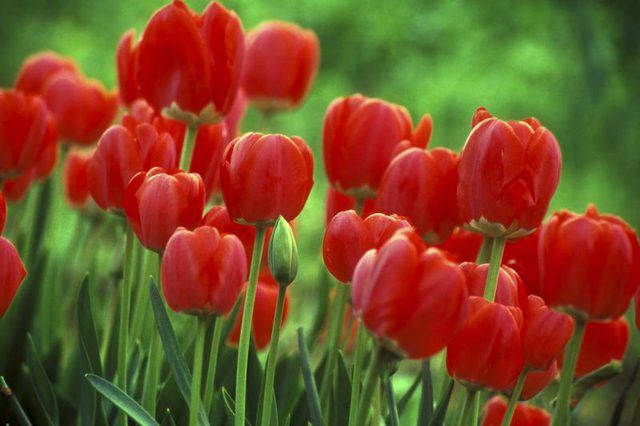Bulbs
Flower Basics
Flower Beds & Specialty Gardens
Flower Garden
Garden Furniture
Garden Gnomes
Garden Seeds
Garden Sheds
Garden Statues
Garden Tools & Supplies
Gardening Basics
Green & Organic
Groundcovers & Vines
Growing Annuals
Growing Basil
Growing Beans
Growing Berries
Growing Blueberries
Growing Cactus
Growing Corn
Growing Cotton
Growing Edibles
Growing Flowers
Growing Garlic
Growing Grapes
Growing Grass
Growing Herbs
Growing Jasmine
Growing Mint
Growing Mushrooms
Orchids
Growing Peanuts
Growing Perennials
Growing Plants
Growing Rosemary
Growing Roses
Growing Strawberries
Growing Sunflowers
Growing Thyme
Growing Tomatoes
Growing Tulips
Growing Vegetables
Herb Basics
Herb Garden
Indoor Growing
Landscaping Basics
Landscaping Patios
Landscaping Plants
Landscaping Shrubs
Landscaping Trees
Landscaping Walks & Pathways
Lawn Basics
Lawn Maintenance
Lawn Mowers
Lawn Ornaments
Lawn Planting
Lawn Tools
Outdoor Growing
Overall Landscape Planning
Pests, Weeds & Problems
Plant Basics
Rock Garden
Rose Garden
Shrubs
Soil
Specialty Gardens
Trees
Vegetable Garden
Yard Maintenance
How to Plant a Tulip Bulb
How to Plant a Tulip Bulb. Tulips (Tulipa) are colorful flowers best suited to U.S. Department of Agriculture plant hardiness zones 4 to 7. Tulips thrive in cold climates and will only bloom in warmer climates with special handling. They bloom best when planted in locations with full sun. Carefully inspect the bulbs before planting. They should be...

Tulips (Tulipa) are colorful flowers best suited to U.S. Department of Agriculture plant hardiness zones 4 to 7. Tulips thrive in cold climates and will only bloom in warmer climates with special handling. They bloom best when planted in locations with full sun. Carefully inspect the bulbs before planting. They should be dry, feel heavy and not have any obvious cuts, mold or bruises. Discard any damaged bulbs.
Prepare Soil
Plant tulips in well-draining soil because tulips do not like to have "wet feet," and bulbs in wet soil rot. If the soil is not loose and airy, amend it: Add peat, compost or vermiculite and mix it well to improve drainage. Turn and mix soil to a depth of at least 12 inches. To pot a tulip bulb, choose a pot at least 12 inches deep and fill it with a quality potting soil that includes peat moss and vermiculite. Tulips prefer neutral or slightly acidic soil. Kits that test soil's pH balance (alkaline, neutral or acidic nature) are available at gardening centers. Soil can be amended to lower or raise its pH.
When to Plant
In USDA plant hardiness zones 4 to 7 plant bulbs in the fall. In USDA plant hardiness zones 8 to 10 plant bulbs in December. Refrigerate bulls for six weeks prior to planting in USDA plant hardiness zones 8 to 10. Tulip bulbs sprout too early if planted in warm ground and then are lost if those areas experience freezing temperatures later in the season. Refrigeration simulates the cooler fall ground temperatures in USDA plant hardiness zones 4 to 7 and prevents early sprouting.
How to Plant
Dig a hole 6 inches deep for tulip bulbs when planting in the garden and 8 inches deep when planting in a pot. Place bulbs pointy-side up on the surface of the soil 6 to 8 inches apart. Gently cover bulbs with soil, taking care to keep them pointing up; in the garden, cover with soil until even with ground level; in a pot, leave 2 inches of clearance for watering.
Watering Bulbs and Plants
Water tulip bulbs thoroughly immediately after planting, saturating the soil. Under normal circumstances, do not water again until the bulbs grow and break the surface of the soil. Tulips typically sprout in April, May or June, depending on the variety. In an unusually warm winter or during drought conditions, water once a month until the bulbs begin growing. Once sprouted, water tulips approximately twice a week, taking care to ensure soil is dry before watering again.
Tulip Bulb Longevity
Tulips may return year after year once planted, though it is rare. Tulips can be temperamental about returning and are subject to interference from foraging pests. Some gardeners leave tulip bulbs in the earth and hope they will bloom again the following year. Others dig up the bulbs in mid-summer and store them for planting the following season. There are no guarantees tulip bulbs will grow again the following season, so it is recommended that new tulips be planted each year.